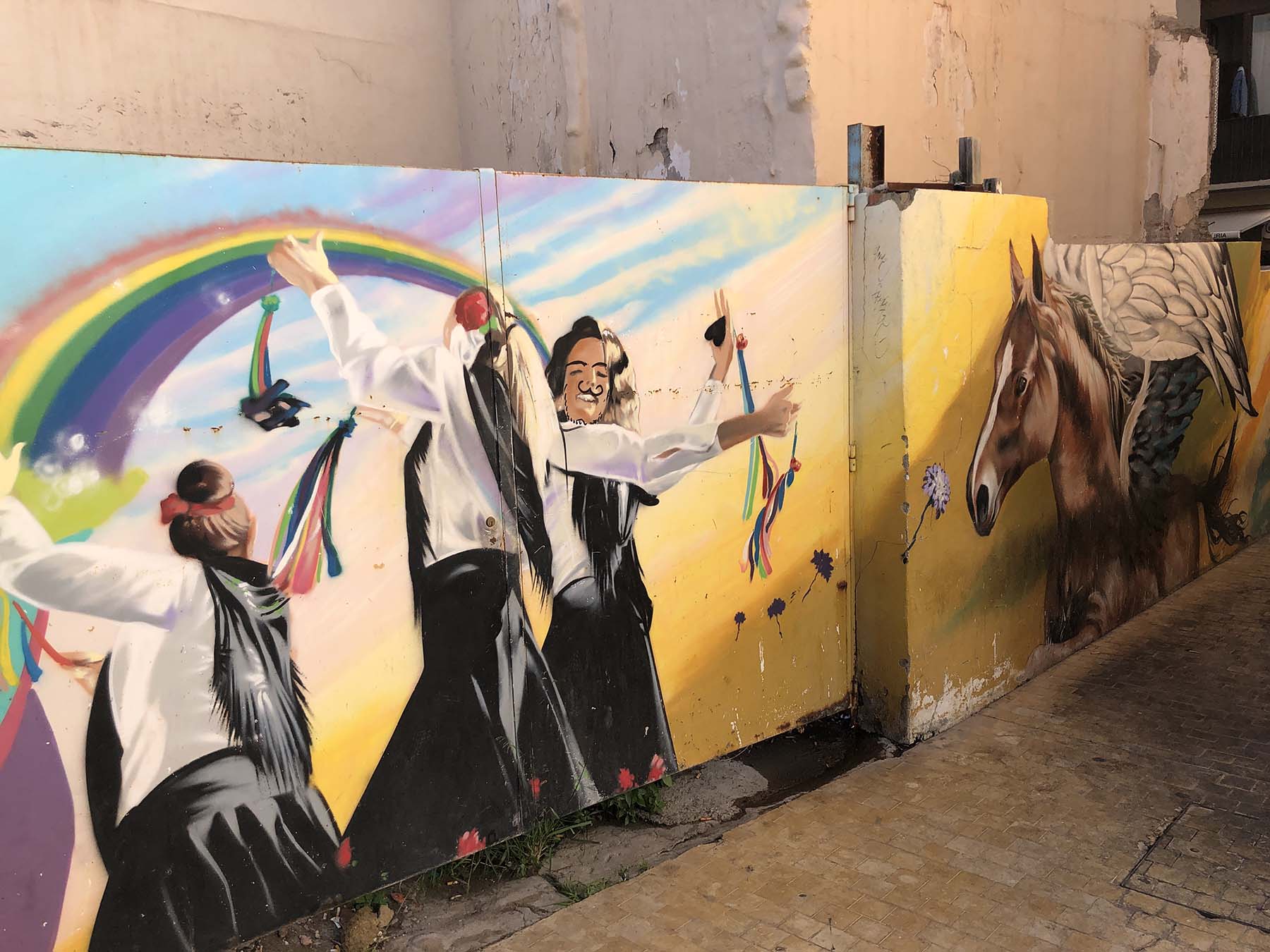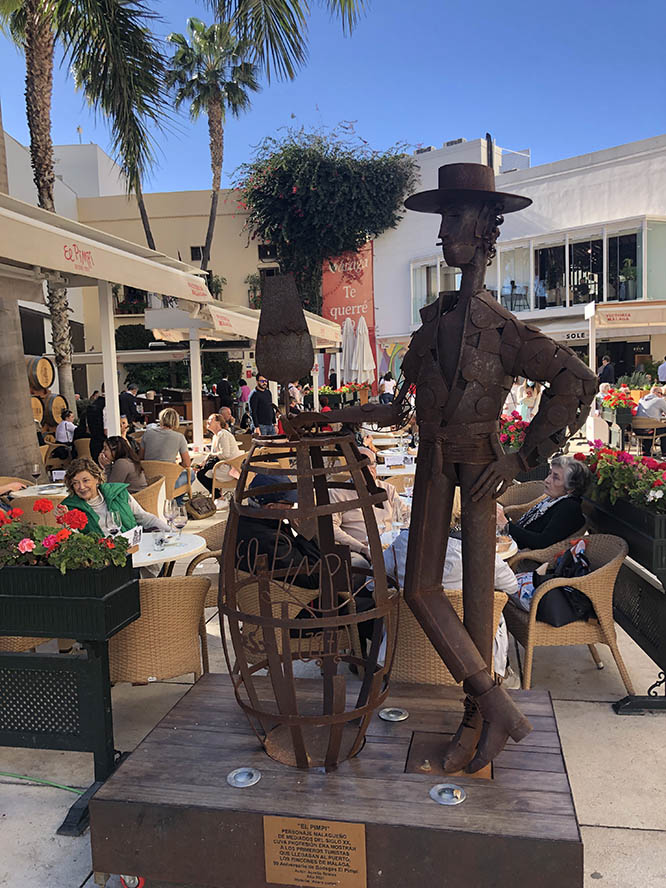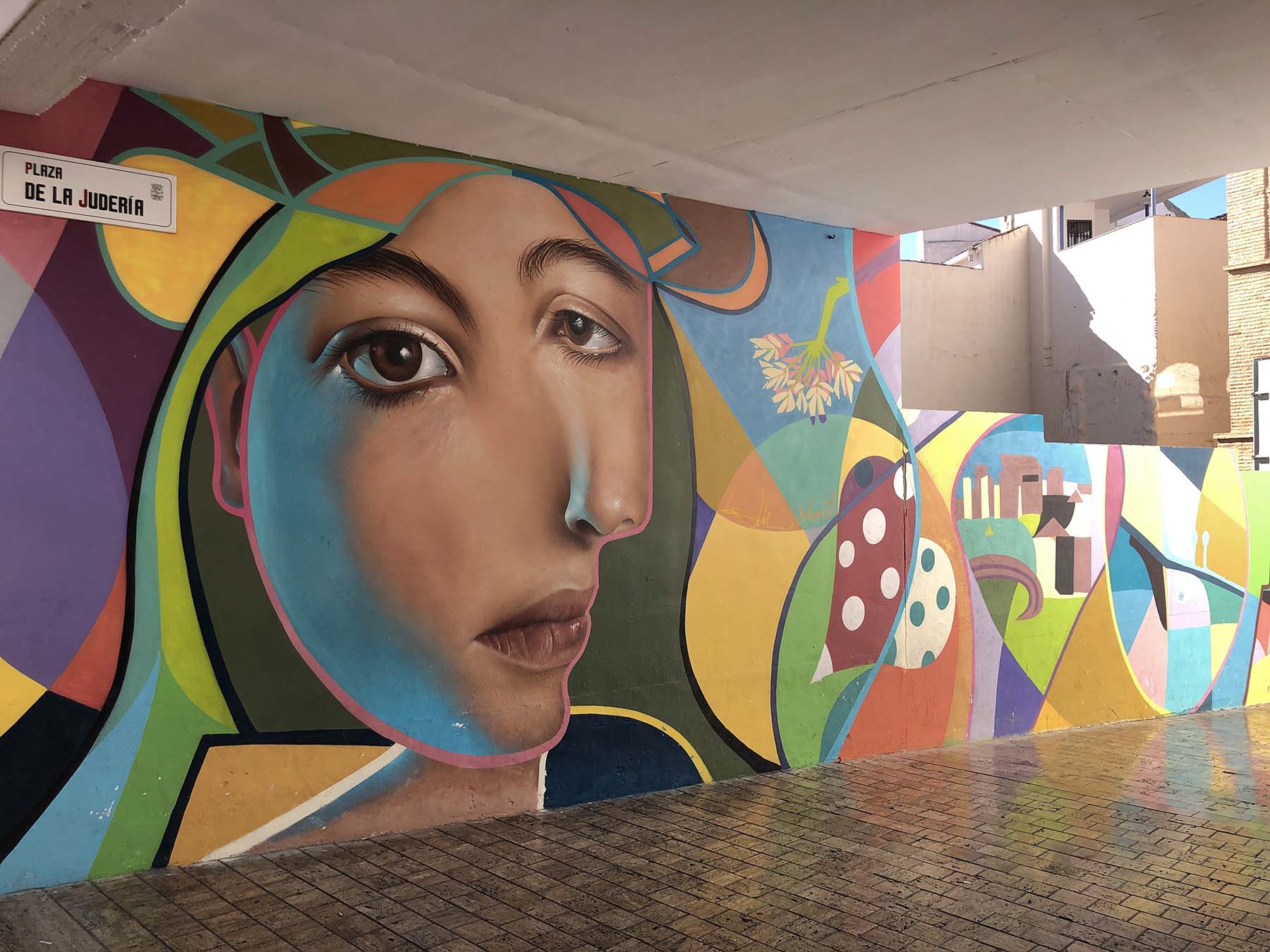La versión en español está después de la versión en inglés.
LULU’S BACK IN TOWN AND she met us for coffee Thursday morning, which made our day so much brighter. Just as we were finishing our visit, San Geraldo’s phone rang, the delivery guy was 5 minutes away with our books. Perfect timing since we were only 3 minutes away from home.
The books are better than either of us ever imagined when San Geraldo first thought up the idea of writing a history of his Lowell family line and its various contemporary extensions. I’ll share photos in the coming days.
I’m thinking of heading back to Málaga for another wander next week. So good to spend time again in the beautiful, historic, diverse city. Today’s photos are a tiny bit of the art that can be seen around town.
The final photo is a statue of “El Pimpi” outside the restaurant of the same name. Judyshannon and I had lunch at the restaurant several years ago and it lived up to its reputation as one of the best, coolest, and most popular in Málaga. El Pimpi/Los Pimpis are said to have been impromptu guides who welcomed early tourists (and sailors) arriving in the port. It’s said they showed the tourists around town, took them to restaurants and flamenco halls — among other less savory (or more savory) places. It’s suggested the name was picked up from the English word “pimp.”
One day, we’ll have another meal there and I’ll do an entire post on the building and the neighborhood, the old Jewish quarter, which is opposite the Roman amphitheatre and below the Alcazaba (the Moorish fort). But back to the art.
.
LULU ESTÁ DE VUELTA EN la ciudad y se reunió con nosotros para tomar un café el jueves por la mañana, lo que hizo que nuestro día fuera mucho más brillante. Justo cuando terminábamos nuestra visita, sonó el teléfono de San Geraldo, el repartidor estaba a 5 minutos con nuestros libros. Momento perfecto ya que estábamos a solo 3 minutos de casa.
Los libros son mejores de lo que cualquiera de nosotros imaginó cuando a San Geraldo se le ocurrió por primera vez la idea de escribir una historia de la línea de su familia Lowell y sus diversas extensiones contemporáneas. Compartiré fotos en los próximos días.
Estoy pensando en volver a Málaga para dar otro paseo la próxima semana. Es tan bueno pasar tiempo nuevamente en la hermosa, histórica y diversa ciudad. Las fotos de hoy son una pequeña muestra del arte que se puede ver en la ciudad.
La foto final es una estatua de “El Pimpi” afuera del restaurante del mismo nombre. Judyshannon y yo almorzamos en el restaurante hace varios años y estuvo a la altura de su reputación como uno de los mejores, más cool y más populares de Málaga. Se dice que El Pimpi/Los Pimpis fueron guías improvisados que dieron la bienvenida a los primeros turistas (y marineros) que llegaban al puerto. Se dice que mostraban a los turistas por la ciudad, los llevaban a restaurantes y salas de flamenco — entre otros lugares menos sabrosos (o más sabrosos). Se sugiere que el nombre se tomó de la palabra inglesa “pimp” (un hombre que controla a las prostitutas y les consigue clientes, tomando a cambio un porcentaje de sus ganancias).
Algún día volveremos a comer allí y haré un post entero sobre el edificio y el barrio, la antigua judería, que está enfrente del anfiteatro romano y debajo de la Alcazaba. Pero volvamos al arte.

• En un barrio diferente, pero uno de mis lugares favoritos.

• Asegúrese de ampliar la miniatura al final.




• Con el Restaurante El Pimpi de fondo, la estatua del malagueño Solomon ibn Gabirol, poeta y filósofo judío andaluz del siglo XI con “un temperamento irrascible”.





